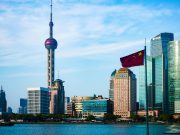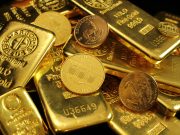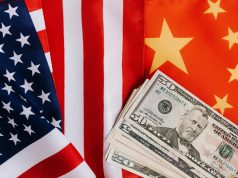
(Singapore, 22.08.2025)As Federal Reserve Chair Jerome Powell prepares to deliver his speech at the annual Jackson Hole economic symposium, a sense of high-stakes anticipation hangs in the air. This isn’t just another routine address; it’s a critical moment where Powell must navigate a complex landscape of conflicting economic signals, immense political pressure, and a fundamental shift in the Fed’s strategy. The outcome of his remarks could shape financial markets for the rest of the year.
The Jackson Hole event has long been a pivotal platform for Fed leaders to signal major policy shifts. Over the years, Powell himself has used this stage to preview the Fed’s next moves, from signaling a path of gradual rate hikes in 2018 to delivering a blunt vow in 2022 to crush inflation “no matter the pain.” This history underscores why his words on Friday carry so much weight and why the world will be listening intently.
This year’s speech is particularly challenging. From a macroeconomic perspective, Powell is walking a tightrope between two competing risks: curbing inflation and supporting the labor market.
A recent soft jobs report and downward revisions to earlier figures have fueled market expectations for rate cuts, with investors anticipating about two 25-basis-point cuts for the rest of the year. However, a surge in wholesale prices in July has complicated this outlook, dimming hopes for a more aggressive half-point cut in September. This delicate balance means Powell must be careful not to commit too transparently to a future path of rate cuts, especially since the inflationary impact of new tariffs remains an unknown factor.
The Political and Strategic Dimensions
Beyond economic data, Powell faces relentless political pressure from the Trump administration to cut interest rates. The drama escalated with a public call for a Fed Governor to resign, intensifying efforts to influence the central bank. For many, this Jackson Hole address is a crucial test of the Fed’s independence.
As one portfolio manager noted, it’s “a good opportunity for Powell to speak about the importance of independence,” a principle essential for the Fed’s credibility and its ability to make sound, long-term policy decisions.
Adding to the complexity, Powell is also expected to use this speech to introduce a new strategic framework for the central bank. This new document would replace the one adopted in 2020, which was crafted during a very different economic environment characterized by low inflation and weak growth. That framework, which promised to let inflation run moderately above 2% to offset past shortfalls, has been criticized for potentially slowing the Fed’s response to the inflation surge that followed the pandemic.
The new framework is expected to recalibrate the Fed’s approach, potentially emphasizing that stable inflation is a necessary foundation for achieving the best labor market results. Powell has already begun using this formulation in recent remarks, stating that “without price stability, we cannot achieve the long periods of strong labor market conditions that benefit all Americans.”
This shift in language is significant. It moves away from the idea of a simple trade-off between inflation and jobs and instead frames inflation control as the prerequisite for a healthy and sustainable job market. While this may seem like a subtle change, it could signal a more inflation-focused, and potentially more hawkish, Fed in the future.
Market Reaction and Volatility Risk
Given this backdrop, investors are preparing for a wide range of outcomes, each with its own market implications. The biggest risk is that Powell pushes back against the market’s expectations for imminent monetary policy easing.
If he signals that the Fed will not be as dovish as Wall Street hopes, it could lead to a negative market reaction. This comes amid concerns of stagflation—a combination of sluggish growth and sticky inflation—which would limit the Fed’s ability to come to Wall Street’s rescue. In this scenario, as one investment expert explained, stocks would likely fall and bond yields would rise.
Conversely, even a balanced message from Powell could be perceived as hawkish by a market hungry for clear dovish signals. The timing of the speech—the last Friday of August—adds another layer of risk. Trading during this period is typically thin with less market liquidity. This poor liquidity could magnify any reaction to Powell’s words, potentially leading to an “unexpected move.” As a result, the advice from financial experts to their clients is straightforward: “expect volatility.”
In conclusion, Jerome Powell’s Jackson Hole speech is far more than an academic exercise. It’s a critical moment for the U.S. economy, for the Fed’s independence, and for global financial markets. How he navigates this intricate political and economic tightrope will be the defining story of the day, with repercussions that will be felt for weeks to come.





































